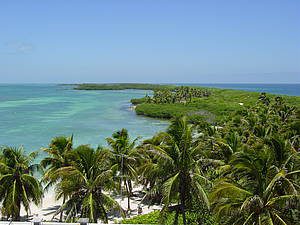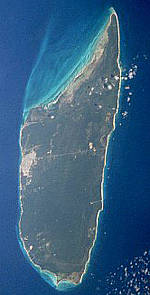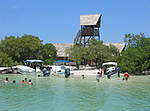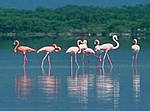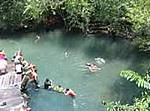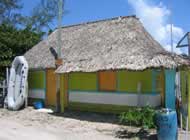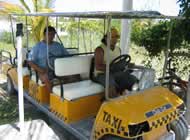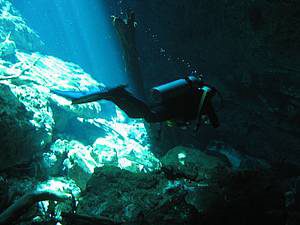Quintana Roo Travel Information
Squalo Adventures – Isla Mujeres, Mexico
Cancun Travel Information
Squalo Adventures – Isla Mujeres, Mexico
Cancún

Unlike many cities in the world, Cancún just isn’t afraid. It’s unabashed and unapologetic, and in that lies its high-gloss charm. So send in the Maya dancers, swashbuckling pirates and beer-chugging US Spring Breakers. Cancún can take it. But can you?
Like Las Vegas, Ibiza or Dubai, Cancún is a party city that just won’t give up. Top that off with a pretty good beach and you have one of the Western Hemisphere’s biggest tourist draws, bringing in as many as 4 million visitors (mostly from the US) each year.
It’s hard to believe this little fishing town would become a worldwide phenomenon. In the 1970’s Mexico‘s ambitious planners decided to outdo Acapulco with a brand-new, world-class resort located on the Yucatán Peninsula, and Cancún was born. Although it isn’t for everyone – and this type of mass-tourism certainly won’t interest all travelers – if you’re here, you might as well dig into the kitsch and crap that make this city unique.
Read more: http://www.lonelyplanet.com/mexico/cancun#ixzz24ds2gZJb
Isla Mujeres Travel Information
Squalo Adventures – Isla Mujeres, Mexico
Isla Mujeres
If you are going to visit just one of Quintana Roo’s islands, then Isla Mujeres (Island of Women) is probably the place for you. It’s not as crowded as Cozumel, yet offers more to do and see than chiller-than-thou Holbox. Sure, there are quite a few ticky-tacky tourist shops, but folks still get around by golfcart and the crushed-coral beaches are better than those of Cozumel or Holbox. There’s not much here and that’s the whole point: come to bask in quiet shallows or stretch out on the sand, to snorkel or scuba dive, or just to put the sunglasses on and open that book you’ve been dying to finish.
Read more: http://www.lonelyplanet.com/mexico/yucatan-peninsula/isla-mujeres#ixzz24dsOmbfL
Isla Contoy Travel Information
Squalo Adventures – Isla Mujeres, Mexico
Isla Contoy
Isla Contoy is a small island in the Mexican state of Quintana Roo, approximately 30 kilometers north of Isla Mujeres. The island is only 8.5 km in length and has an area of 3.17 square kilometres.
Since 1961, Isla Contoy is protected by the Mexican government and declared a National Park in February 1998. The island is jointly run by the Isla Mujeres-based Non-Governmental Organization, Amigos de Isla Contoy A.C. and the Secretary of Environment, Natural Resources and Fishing (SEMARNAT).
Supervised eco-tourism and regulated commercial fishing is allowed on and near the island. Only a few tour companies have permission to bring the only at maximum 200 daily visitors to Isla Contoy. Visitors need to apply for permission to visit the island at the Park offices in Isla Mujeres Cancún.
Four species of turtle find a safe haven for nesting on the beaches of the island, namely the loggerhead turtle, Green turtle, Hawksbill turtle, and the leatherback turtle. The reserve is also a sanctuary to approximately 152 tropical marine birds, like the frigate bird, brown pelican, and the double-crested cormorant.
Cozumel Travel Information
Squalo Adventures – Isla Mujeres, Mexico
Cozumel
An immensely popular diving spot since 1961, when Jacques Cousteau, led by local guides, showed its spectacular reefs to the world, Cozumel lies 71km south of Cancún. Measuring 53km by 14km, it is Mexico’s largest island. Called Ah-Cuzamil-Peten (Island of Swallows) by its earliest inhabitants, Cozumel has become a world-famous diving and cruise ship destination. Hurricane Wilma did some serious damage to the snorkeling sites around the island, but most of the deep-water reefs missed the brunt of the storm. Sadly, the squadrons of eagle rays have dwindled, due to overfishing of the shellfish stocks – no shellfish, no eagle rays.
While diving and snorkeling are the main draws around here, the tourist zone offers lots of shopping ‘deals’ (often not very cheap) and a pleasant town square to spend the afternoon. In February there is a festive Carnaval, which brings dancers festooned with feathers out into the streets. There are also some small Maya ruins and a few eco-themed parks.
Read more:
http://www.lonelyplanet.com/mexico/isla-cozumel#ixzz24dutV7Ui
[/su_panel]
Isla Holbox Travel Information
Squalo Adventures – Isla Mujeres, Mexico
Isla Holbox
Isn’t life great when it’s low-fi and low-rise? That’s the attitude on friendly Isla Holbox (hol-bosh), with its sand streets, colorful Caribbean buildings and lazing, sun-drunk dogs. The water is not the translucent turquoise common to Quintana Roo beach sites, because here the Caribbean mingles with the darker Gulf of Mexico. The island is about 30km long and from 500m to 2km wide, with seemingly endless beaches, tranquil waters and a galaxy of shells in various shapes and colors. Lying within the 1541 sq km Yum Balam reserve, Holbox is home to more than 150 species of bird, including roseate spoonbills, pelicans, herons, ibis and flamingos. In summer, whale sharks congregate relatively nearby in unheard-of quantities.
Read more:
http://www.lonelyplanet.com/mexico/yucatan-peninsula/isla-holbox#ixzz24dtjtAbJ
Most of the people of Holbox Island make their living fishing. It is common to see fishermen walking through Holbox Village with their catch of the day or carrying their nets. The streets of Holbox Island are made of white sand, common of Caribbean islands, and there are very few cars. Holbox is considered a virgin tourist destination because very few outsiders visit the island. In spite of Holbox’ natural beauty, inaccessibility has left it unspoiled by mass tourism.
Cenotes in the Mexican Riviera
Squalo Adventures – Isla Mujeres, Mexico
Cenote
The natural wonders of the state of Yucatán are innumerable and some of the most important and unusual are the cenotes, or sinkholes. It is estimated that there are more than 6000, although only 2400 are registered.
The Mayas called them dzonot, which the conquering Spaniards translated as cenote. Geraldo Díaz Alpuche was a military commander in the 16th century who was greatly impressed with these underground caverns and pools, and he tried to explain the meaning of the word cenote in the Spanish language as meaning “deep thing”. The Motul dictionary, a dictionary of Mayan hieroglyphics, defines dzonot as “abysmal and deep”. Cenotes are magical, enigmatic and unique in the world and were once the only resource for fresh, sweet water in the local Yucatecan jungle. They were the sacred places of the Mayas for that reason, but also because they represented the entrance to the underworld.
The Yucatán Peninsula is a porous limestone shelf with no visible rivers; all the fresh water rivers are underground. Being porous, caverns and caves formed where the fresh water collects – hence the cenotes or water sinkholes. The water that gathers in these subterranean cenotes is a crystal clear turquoise color with a very pleasant temperature of 78° F (25.5º C). The stalactites and stalagmites that form inside the cenotes are true natural works of art. In many, holes in the ceiling allow the sunlight to filter into the cenotes, giving the scene a magical feeling. The cenotes of Yucatán are a natural treasure that should be seen by all, keeping in mind that they should be protected so that man does not destroy in a few days what nature took millions of years to create.
There are four different types of cenotes – those that are completely underground, those that are semi-underground, those that are at land level like a lake or pond, like the one at Dzibilchaltún, and those that are open wells, like the one in Chichén Itzá. Some of them are accessible for swimming and cave diving, but this is a sport that should ONLY be practiced with a professional guide.
Arriving by air into Merida, think of the land of cenotes, geological cavities which vary according to their morphology; deposits of crystalline waters with a stunning kaleidoscope of natural light, and also, incidentally, which played a leading role in the development of the Mayan culture. Without cenotes, this enigmatic civilization would not have prospered, not to mention the religious significance that they played in their mythology, as the gateways to the underworld. When your plane touches down, only a few meters away from the runway are some of these natural wonders. The cenotes by the airport cannot be visited, as they are not open to the public, but the geography of the Penísula is full of them. Do not miss the chance to see the cenotes of Yucatán: pure magic!



